Prominent Vancouver street given 2nd name in honour of Komagata Maru ship
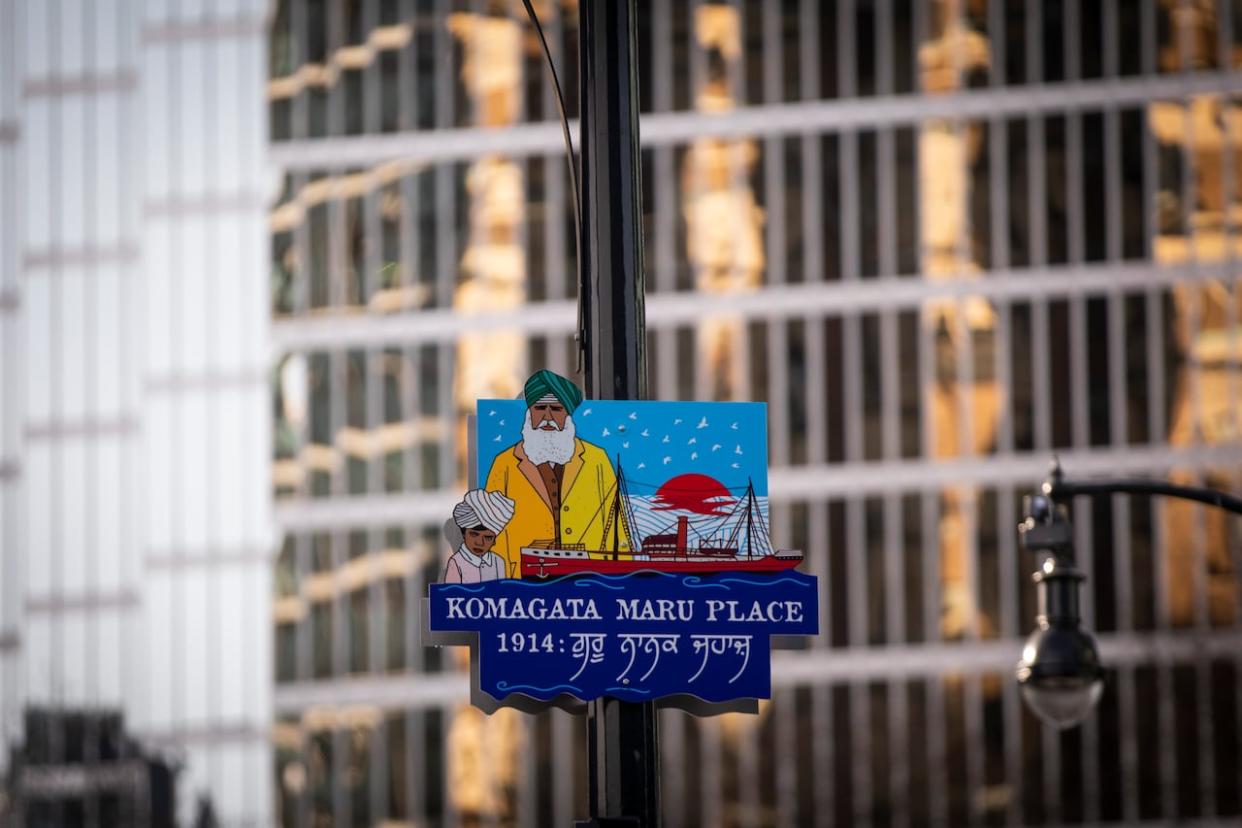
The City of Vancouver has given a second name to a prominent street on the city's waterfront in honour of the Komagata Maru, a ship carrying hundreds of South Asian people that was turned away from the city a century ago.
Canada Place, the street where a cruise and ferry terminal and the Vancouver Convention Centre both stand, will now have the second name of Komagata Maru Place, as it was the site closest to where the ship was docked for nearly two months in 1914.
City officials made the second name official at a Friday event, with the initiative announced last year as the city works to recognize its role in an incident that saw the ship's passengers turned away due to an exclusionary immigration policy.
The Canadian law that targeted the Komagata Maru was called the Continuous Passage Act, passed in 1908.
It required all prospective immigrants to Canada to arrive directly from their point of origin, without stops in between — a near-impossible task for those travelling from India and Japan. The law remained in place until 1947.
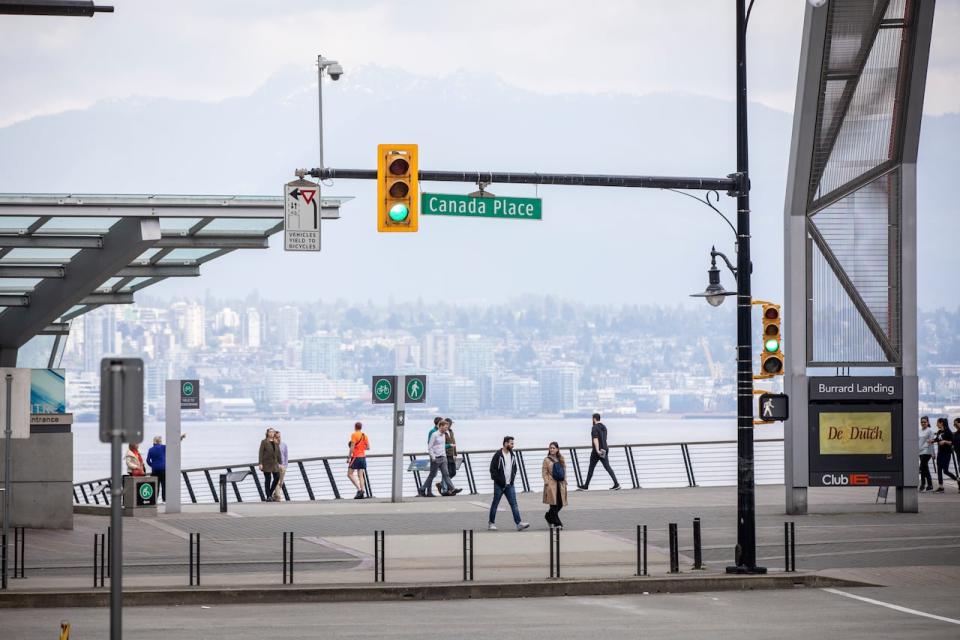
Canada Place street is pictured last May. It is near where the Komagata Maru docked in 1914. (Ben Nelms/CBC)
The Komagata Maru, also called the Guru Nanak Jahaaz, docked near the current location of Canada Place in 1914 with 340 Sikh, 27 Muslim and 12 Hindu passengers on board, most of whom were denied entry into Canada despite having valid travel documents.
The ship sat in the harbour for two months, and the passengers on board had to contend with a lack of medical aid, food or water.
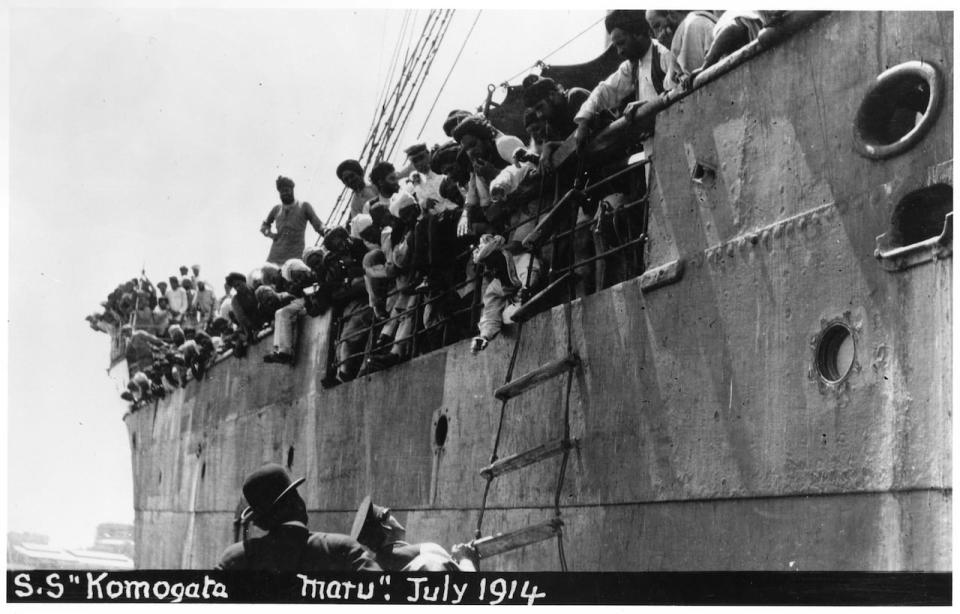
The Komagata Maru passengers were British subjects, which entitled them to immigration to Canada, but were refused on the basis of a racist immigration policy. Many of them starved on board the ship, and local officials sent police to remove the ship from the Burrard Inlet. (Vancouver Public Library 13157)
It was ultimately forced to return to India and was met by British soldiers. Nineteen passengers were killed and others jailed by colonial authorities there after being considered political agitators.
Raj Singh Toor, the vice-president of the Descendants of the Komagata Maru Society and a grandson of one of the ship's passengers, said the street renaming would go some way to correcting the hurt inflicted 110 years ago.
"We can't undo the past, but we can move forward and leave a legacy for the future generations by educating them about the past," Toor told CBC News at the Friday event.
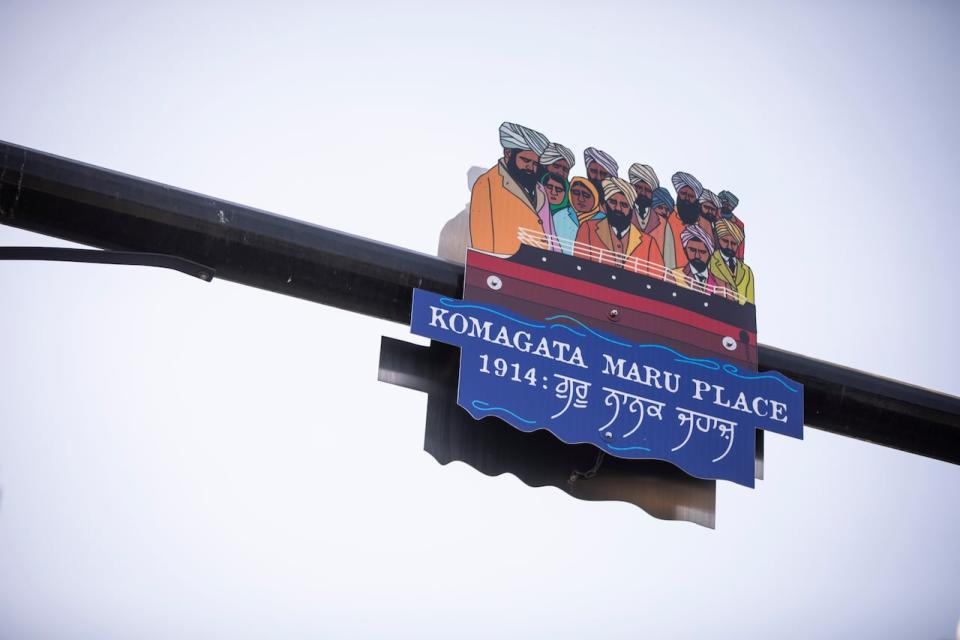
The artwork that will accompany the Komagata Maru Place signage was designed by local artist Jag Nagra. (Ben Nelms/CBC)
Multiple city officials were in attendance Friday, including Vancouver Mayor Ken Sim, who apologized for the city's role in turning away the passengers at the time.
"I think it's incumbent upon all of us to unlearn what we've been taught in the past and learn the true history as to what's happened on these lands," Sim told a news conference.
The city officially apologized for its role in the Komagata Maru incident in 2021, and the federal government issued an apology in 2016.
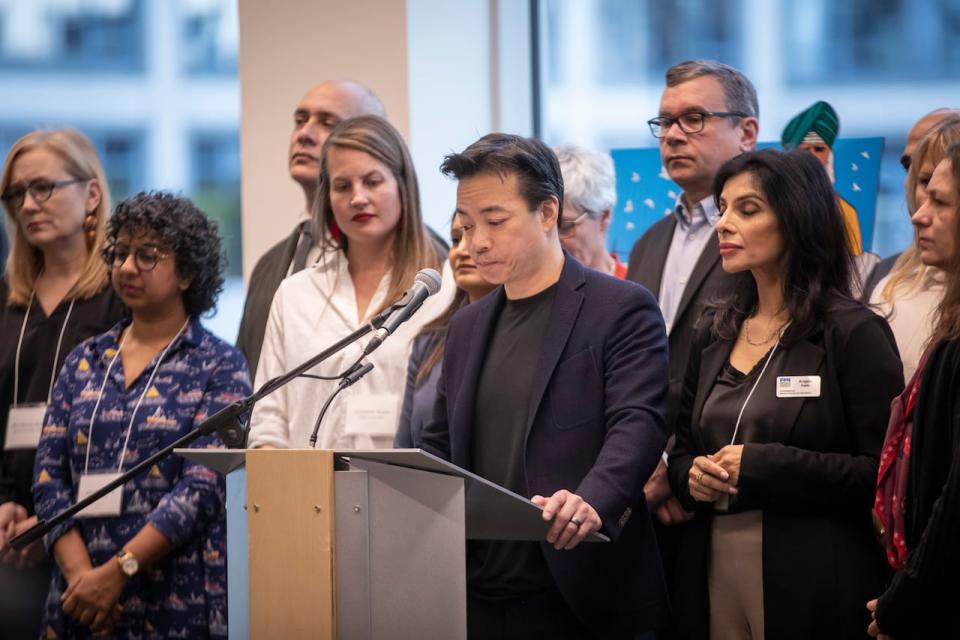
Mayor Ken Sim said that the city would work to ensure discrimination like the Komagata Maru incident would never occur in Vancouver or Canada again. (Ben Nelms/CBC)
Artist cites lasting effects
The artwork that will be seen at the street signs marking Komagata Maru Place is designed by Jag Nagra, a local artist who has designed numerous prominent pieces in Metro Vancouver.
In an artist's statement on the City of Vancouver website, Nagra says the Komagata Maru incident had lasting effects on South Asian people in the region.
"The racism, the lack of regard for human life — it wasn't an 'incident'. It was a tragedy in every sense of the word," she told the Friday news conference.
"My hope with these two artworks is that they serve as a reminder every day to expect better, to do better, and to make sure we keep our histories alive so they're not erased."
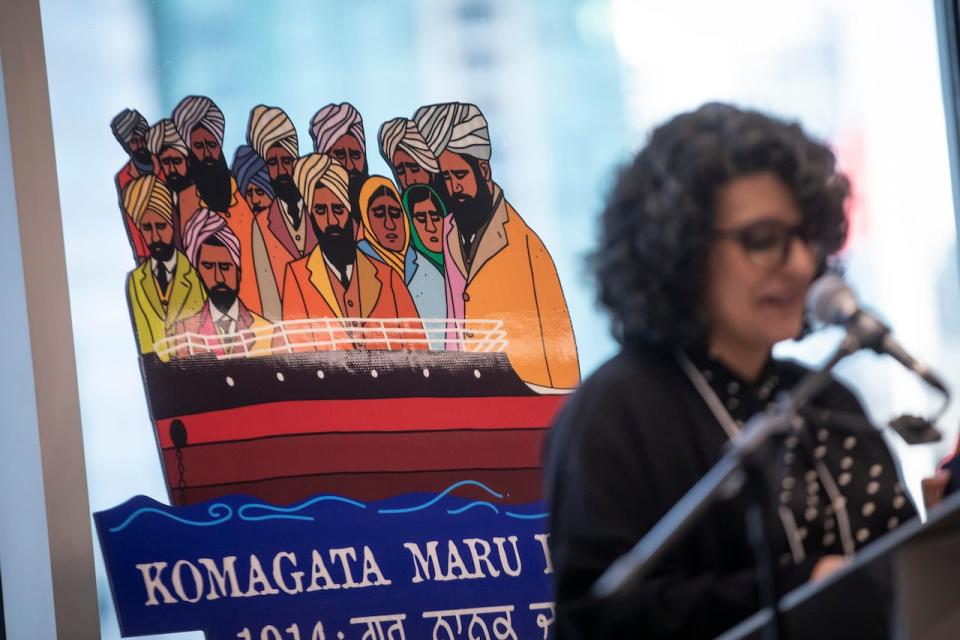
Artist Jag Nagra says working on the two street signs marking Komagata Maru Place was an emotional journey. (Ben Nelms/CBC)
Both street signs feature the year 1914, as well as the text "Guru Nanak Jahaaz" written in Punjabi. The first street sign depicts 19 doves, representing the 19 passengers killed on their return to India.
The second features a number of passengers crowded together, with Nagra saying she took care to represent the diversity of cultures and people on board, including women.

